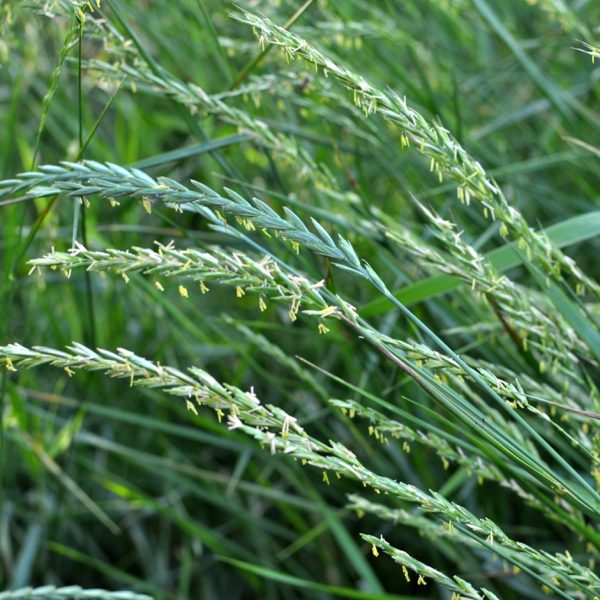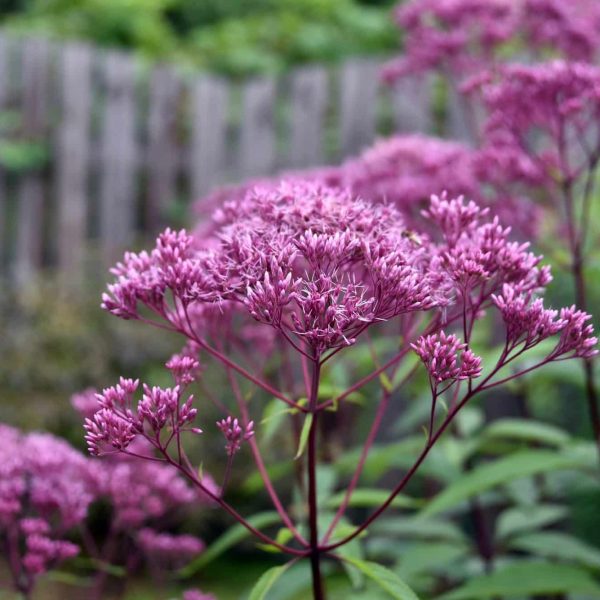-
How does it feel?
Gravel root is extremely hard. When harvested it has to be chopped with an axe to divide the firmly matted roots. It feels strong, like it can break something, such as a stone. It is acrid, heavy and descending.
-
What can I use it for?
 Gravel root has been used for all manner of presentations affecting the urinary tract that are accompanied by pain, infection and inflammation. It causes an increase in urine production and can help flush out waste products. This action means it can also be of benefit in chronic joint pain.
Gravel root has been used for all manner of presentations affecting the urinary tract that are accompanied by pain, infection and inflammation. It causes an increase in urine production and can help flush out waste products. This action means it can also be of benefit in chronic joint pain.Traditionally often combined with Hydrangea and Parsley piert or Pellitory-of-the-wall for urinary gravel.
It is important to ensure you are obtaining an authenticated source of this plant. There can be hybridization with other species or adulteration and contamination with other related species such as Boneset (Eupatorium perfoliatum).
Please refer to the safety section for further detail.
-
Into the heart of gravel root
Due to its diuretic properties gravel root has been used to good benefit in the urinary system for infections and urinary gravel, hence its common name. It has been used to good effect along with herbal analgesics and anti-inflammatories in cases of prostatitis.
It can be of help in gout and ‘rheumatism’ – the latter, a catch-all term used to describe conditions characterised by pain and stiffness in the muscles, joints or surrounding fibrous tissue. Useful here as it helps the body to rid itself of waste products via the kidneys.
-
Traditional uses
 Traditionally gravel root was used in a similar way to its relative Boneset (Eupatorium perfoliatum) for fevers and as a tonic for debility, especially in older people.
Traditionally gravel root was used in a similar way to its relative Boneset (Eupatorium perfoliatum) for fevers and as a tonic for debility, especially in older people.The plant was widely used by Native Americans. The Cherokee used the roots as a remedy for the kidneys and for rheumatism. It was also used as a partus preparator (to prepare the womb for labour) and to tone the uterus. The Chippewa used it when with a cold, inhaling the vapours from an infusion of the plant. The Potawatomi people used a poultice of the leaves for burns, and the Navajo used the herb as an antidote for poison (2).
Adopted by white settlers it was also used for urinary infection, gravel and stones and as a diaphoretic to help break a fever.
Gravel root was considered a valuable remedy for dropsy – a term once used for fluid retention/oedema and stranguary – another old term used for painful spasm in the bladder and urethra with frequent need to urinate, often whilst only passing small amounts of urine.
Also used for blood in the urine, gout and rheumatism, it was said to exert a special influence on chronic renal and cystic issues (3).
-
Traditional actions
Herbal actions describe therapeutic changes that occur in the body in response to taking a herb. These actions are used to express how a herb physiologically influences cells, tissues, organs or systems. Clinical observations are traditionally what have defined these actions: an increase in urine output, diuretic; improved wound healing, vulnerary; or a reduction in fever, antipyretic. These descriptors too have become a means to group herbs by their effects on the body — herbs with a nervine action have become the nervines, herbs with a bitter action are the bitters. Recognising herbs as members of these groups provides a preliminary familiarity with their mechanisms from which to then develop an understanding of their affinities and nuance and discern their clinical significance.
-
Traditional energetic actions
Herbal energetics are the descriptions Herbalists have given to plants, mushrooms, lichens, foods, and some minerals based on the direct experience of how they taste, feel, and work in the body. All traditional health systems use these principles to explain how the environment we live in and absorb, impacts our health. Find out more about traditional energetic actions in our article “An introduction to herbal energetics“.
Western energetics
-
What practitioners say
 Genitourinary tract
Genitourinary tractIn urinary tract infections it has been put to good use when combined with demulcents such as corn silk and urinary antiseptics such as thyme or buchu.
Useful in cystitis, urethritis, dysuria (painful urination) and prostatitis, it combines well with pasque flower for such situations.
Musculoskeletal
The diuretic properties of gravel root make it helpful in osteoarthritis and gout, drawing out impurities by increasing the flow of urine.
Liver remedies are often combined to assist the body excrete waste products via the bowel, thus utilising both these routes of elimination.
-
Research
There is scant scientific data on the medicinal actions of gravel root.
In vitro anti-inflammatory activity has been demonstrated from an isolated constituent of gravel root known as cistifolin, a benzofuran flavonoid which may contribute to the plants reputation as an anti-rheumatic herb (7).
Please also refer to the safety section.
-
Did you know?
The common name of Joe-pye weed comes from the name of Joe Pye, a New England medicine man who was said to have halted an epidemic of typhoid fever in colonial Massachusetts with use of the plant. The ashes from burnt roots have been added as a kind of salt to flavour foods.
Additional information
-
Botanical description
Gravel root sits within a genus of 38 species of hardy and semi-hardy perennials and shrubs.
Native to eastern USA, Gravel root is a tall, handsome, clumping perennial with whorls of finely-toothed, lance-shaped leaves on unbranched stems. Dome-shaped corymbs of feathery lavender-pink flowers appear in mid to late summer, their scent redolent of vanilla. It can get up to around 3 meters in height with a spread of one metre. Often found on the borders of woodland, river sides and thickets, it favours a sunny or partially-shaded spot.
This plant hybridizes with other species of Eutrochium and can show variability in appearance of leaf shape.
The fragrant flowers attract a number of different visitors, including butterflies, moths and native bees.
The roots and rhizomes are harvested for medicinal use in the autumn after the plant has finished flowering (1).
-
Common names
- Gravel root
- Joe-pye weed
- Jopi weed
- Queen of the Meadow
- Purple boneset
- Trumpet weed
- Kidneywort
-
Safety
Whilst gravel root can help in reducing the risk of recurrent issues with urinary gravel, kidney stones require conventional medical attention.
Pyrrolizidine alkaloids (PAs) are naturally occurring phytochemicals found in certain plant families. They are produced by the plants as a defence mechanism against being eaten. Some PAs can be carcinogenic, hepatotoxic and mutagenic.
It is possible, but certainly by no means definite, that Gravel root may contain hepatotoxic pyrrolizidine alkaloids.
Adulteration of Gravel root with other family members such as Boneset can be a risk, along with that of the common occurrence of interspecies hybridization, which has the potential to cause an alteration in the plant’s phytochemical profile (5).
Overall the research is contradictory and contamination issues are a likely possible issue here.
The European Herbal and Traditional Medicines Professional Association (EHTPA) have decided at present to adopt a watch and wait approach on both boneset and gravel root until more formal research is undertaken where identification/DNA bar coding can be used to identify adulteration issues.
Chemotype and hybridisation issues are more complex but the EHTPA are working with specialists on this.
They are liaising with herbal suppliers to see what can be done to ensure contamination and adulteration risks are limited (6).
-
Contraindications
Contraindicated in children, pregnancy and lactation.
-
Dosage
2-4g dried root and rhizome one to three times daily
Decoction – half to a teaspoon simmered in a mug-sized amount of water for 15-20 minutes. Half a cup per dose
3-8 ml per day 1:3 tincture
-
Plant parts used
The roots and rhizomes harvested in the autumn after the plant has finished flowering.
-
Constituents
- Volatile oil: 0.07%
- Flavonoids: euparin, euparone and cistofolin
- Resin: Eupurpurin

-
References
- Flora of North America Editorial committee (2006) Magnoliophyta: Asteridae, part 8: Asteraceae, part 3.21: i-xxii, 1-616. Inflorescences of North America. Oxford University Press, New York
- Moerman, D.E. (1998) Native American Ethnobotany; Timber Press, Inc.: Portland, OR, USA. ISBN 9780881924534
- Grieve, M (1931): A Modern Herbal. Tiger press. Ed 1992. ISBN 1-83-5501-249-9
- Plants for a future. www.pfaf.org Accessed March 2022.
- Colegate, S et al. (2018): Potentially toxic pyrrolizidine alkaloids in Eupatorium perfoliatum and three related species. Implications for herbal use as boneset. Phytochemical analysis. Vol 26 (6) 613-626
- Etheridge, C, Director of the European Herbal and traditional Medicines Professional Association. Personal communication. 28/3/22
- Habtemariam, S. (2001): Antiinflammatory activity of the antirheumatic herbal drug, gravel root (Eupatorium purpureum): further biological activities and constituents. Phytotherapy Research.Vol 5 (8) 687-690
- British herbal pharmacopoeia. (1991) Scientific Committee, BHMA. ISBN 0 903032 07 4




























 Gravel root has been used for all manner of presentations affecting the urinary tract that are accompanied by pain, infection and inflammation. It causes an increase in urine production and can help flush out waste products. This action means it can also be of benefit in chronic joint pain.
Gravel root has been used for all manner of presentations affecting the urinary tract that are accompanied by pain, infection and inflammation. It causes an increase in urine production and can help flush out waste products. This action means it can also be of benefit in chronic joint pain. Traditionally gravel root was used in a similar way to its relative Boneset (Eupatorium perfoliatum) for fevers and as a tonic for debility, especially in older people.
Traditionally gravel root was used in a similar way to its relative Boneset (Eupatorium perfoliatum) for fevers and as a tonic for debility, especially in older people. Genitourinary tract
Genitourinary tract





